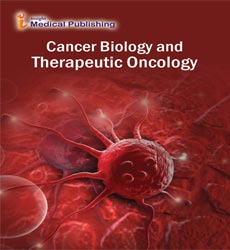BMI AND MORPHOLOGICAL CHARACTERISTICS TRIPLE-NEGATIVE BREAST CANCER
Abstract
Background: The aim of this retrospective analysis was to investigate the morphological features of triple-negative breast cancer (TNBC) patients with different body mass index (BMI). The incidence of breast cancer in the world in general and in Ukraine in particular is growing. In 2017, in Ukraine the incidence reached 16 percent of female population. According to the Ministry of Health in Ukraine 26% of the female population for 2017 was overweight or obese. There is a strong biologic basis for an association of obesity with poor breast cancer outcomes. Obesity - a chronic metabolic character, which is the result of the interaction of the endogenous factors, environmental conditions and lifestyle. Endogenous factors could be considered a violation of the genetic and hormonal balance. The external conditions include irregular rhythm nutrition, use of substandard products. By disorders include sedentary lifestyles. Obesity is the first risk factor for metabolic syndrome, diabetes type II, cardiovascular diseases and some forms of cancer, including breast cancer. Since overweight is a risk factor for breast cancer, there is a reason to believe that among patients with breast cancer the percentage of obese women is higher than in the population. The risk of breast cancer in postmenopausal women by 30% more than in premenopausal, women with obesity - 50%. Furthermore it was proven that obesity is associated with poor prognosis in patients with breast cancer, regardless of menopausal status. Patients and methods: The study included 90 patients with TNBC aged 25 to 77 (54.6 ± 1) years old, who sought medical care in clinic of oncology years of age who were treated according to our clinic, department of oncology and medical radiology Dnipropetrovsk medical academy at Municipal Institution "Dnipropetrovsk City Multi-field Clinical Hospital #4", Dnepropetrovsk state medical academy from 2015-2017. All patients were evaluated according to the following data: stage of the disease, age and BMI at the time of diagnosis, the size, histological type and metastases. IHC type ,MRI methods, Bioelectrical impedance analysis, Ultrasounds analysis. A morphological characteristics of TNBC was evaluated in relation to BMI. Results: According to WHO criteria women with TNBC were divided into the 3 groups: group 1 – 21patients (24%) were normal/underweight (BMI <25 kg/m2), group 2 – 41patients (43%) were overweight (BMI from 25 to 29.9 kg/m2), and group 3 – 28patients (33%) were obese (BMI ≥ 30 kg/m2). In postmenopausal TNBC is diagnosed in significantly more patients with obese, and in premenopausal in patients who have overweight. Lobular TNBC was significantly more frequent in patients in with obese (25%) and ductal - in patients with group 1 and 2 in 72% and 75% of cases. Low histological grade (G3, G4) occur in patients with overweight and obese (30% and 40%, respectively). Lymph node metastases were often (for 13%) in patients with obese. Conclusions: Our study shows an association between high BMI and poor prognostic morphological characteristics in patients with TNBC. Disclosure: All authors have declared no conflicts of interest. Biography: Dr. Hojouj Mohammad I M is working at Department of Oncology and Medical Radiology, Dnipropetrovsk Medical Academy of Health Ministry of Ukraine, Ukraine.
Open Access Journals
- Aquaculture & Veterinary Science
- Chemistry & Chemical Sciences
- Clinical Sciences
- Engineering
- General Science
- Genetics & Molecular Biology
- Health Care & Nursing
- Immunology & Microbiology
- Materials Science
- Mathematics & Physics
- Medical Sciences
- Neurology & Psychiatry
- Oncology & Cancer Science
- Pharmaceutical Sciences
